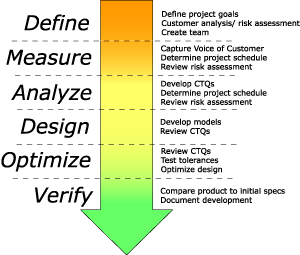
A classic definition: "Six Sigma is a process-focused methodology designed to improve
business performance through improving specific areas of a strategic business processes.".
From this alone it is clear why there are a number of parallels with ITIL, although six
sigma of course isn't restricted to information technology.
Sigma is a symbol meaning how much deviation exists in a set of data - sometimes called a
bell curve, or a standard normal distribution. In a standard normal distribution, 50% of
the values lie above the mean (average) and 50% of the values lie below. In Statistics we
take it a step further and delineate certain data points within that timeline.
The diagram may look tricky to read, but in simple language: Consider that you run a pizza
delivery business and you set a target of delivering pizza’s within 25 minutes of receiving
the order. If you achieve that 68% of the time, you are running at 1 Sigma. If you achieve
it 99.9997% of the time then you are at 6 Sigma (or you are late on average only 3.4 times
out of every one million orders).
That is fundamentally how six sigma measures quality. It measures the Variance and does not
rely on the Mean.
It is argued that all too often businesses base their performance on a mean, or
average-based measure, of the recent past. However, reality is that customers DON'T judge
businesses on averages. They actually experience the variance in each and every transaction
or purchase.
Customers also value consistent and predictable business processes and products that
deliver high levels of quality. Six Sigma focuses first on reducing variation, and then on
improving process capability.












